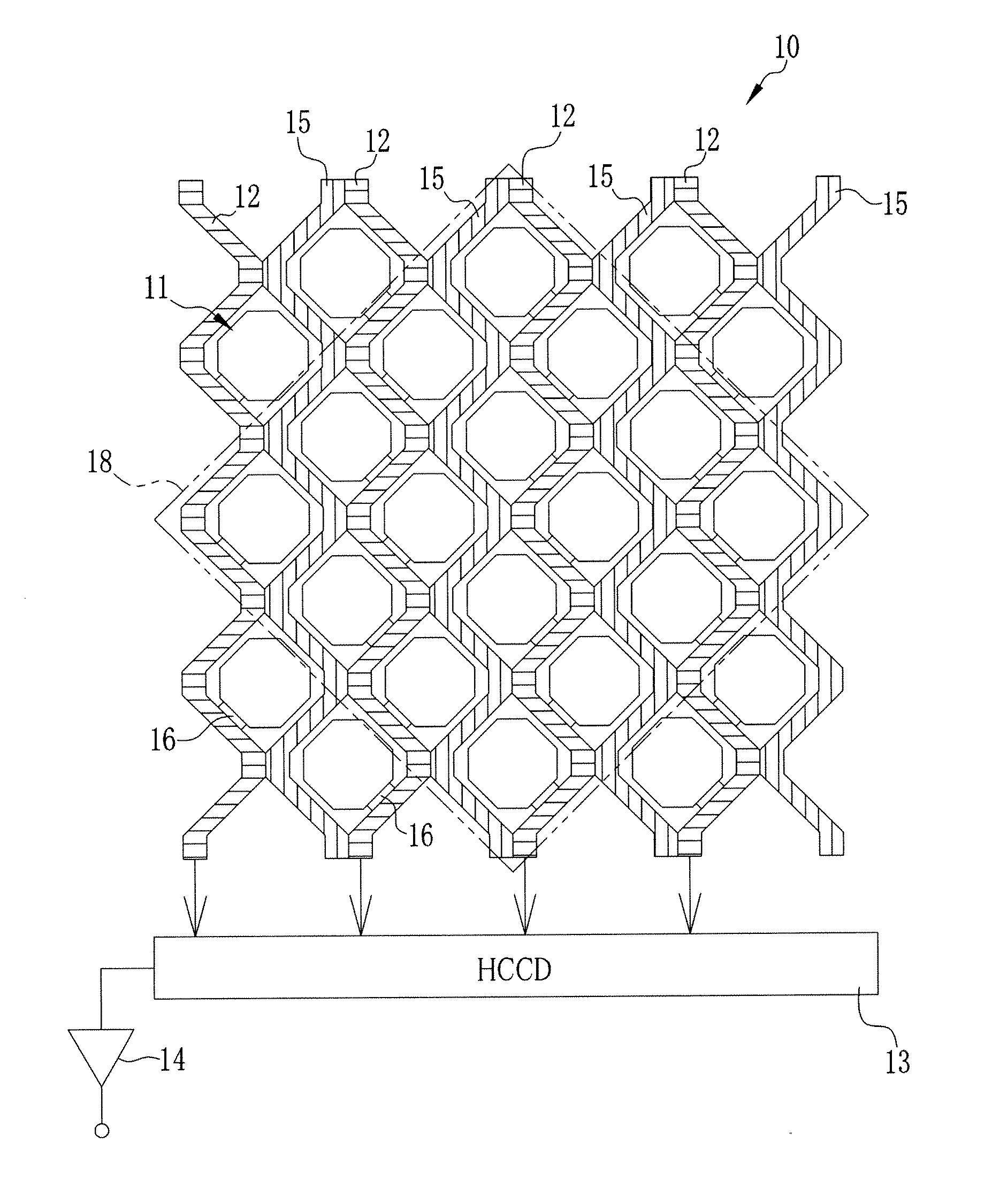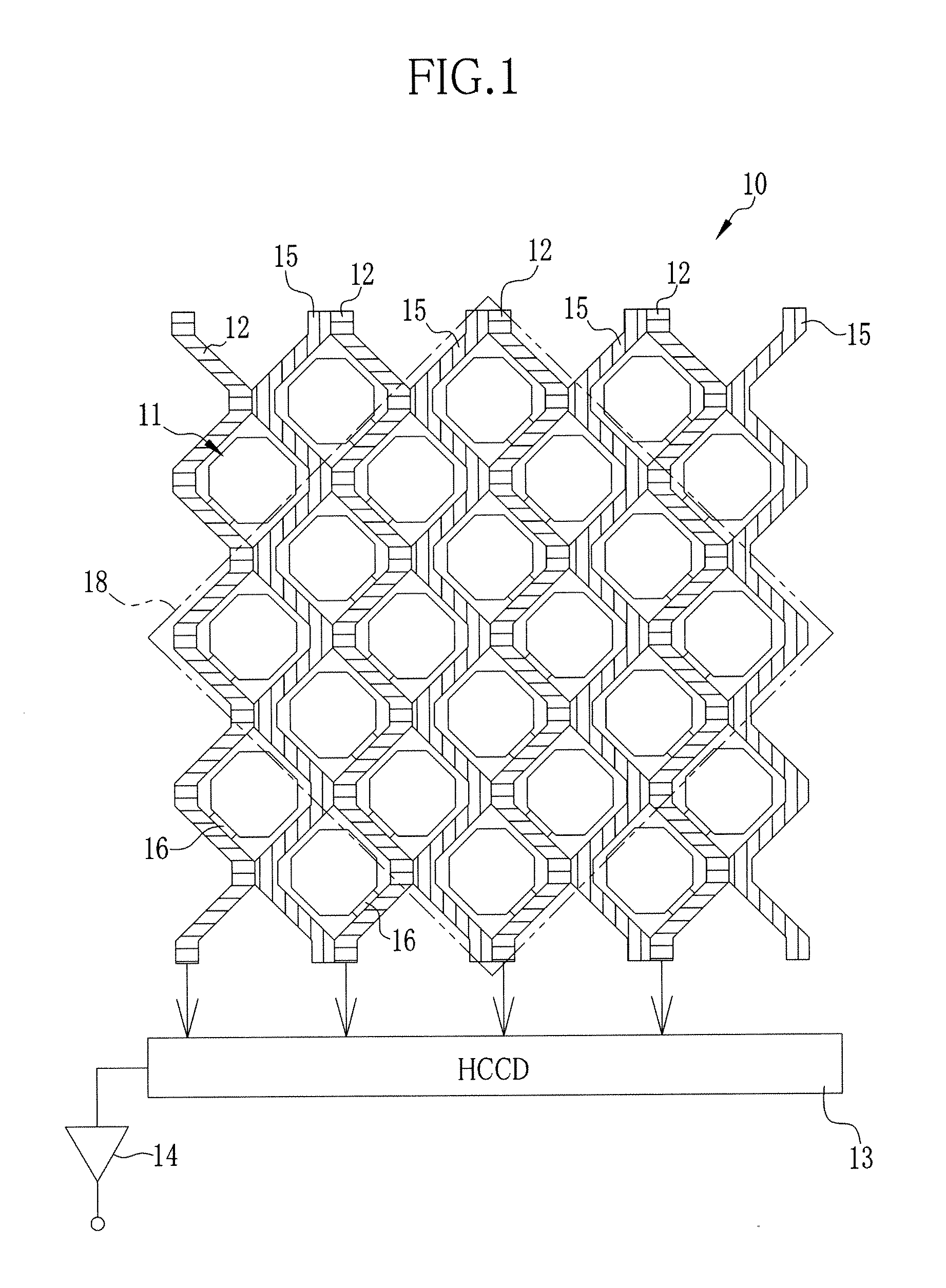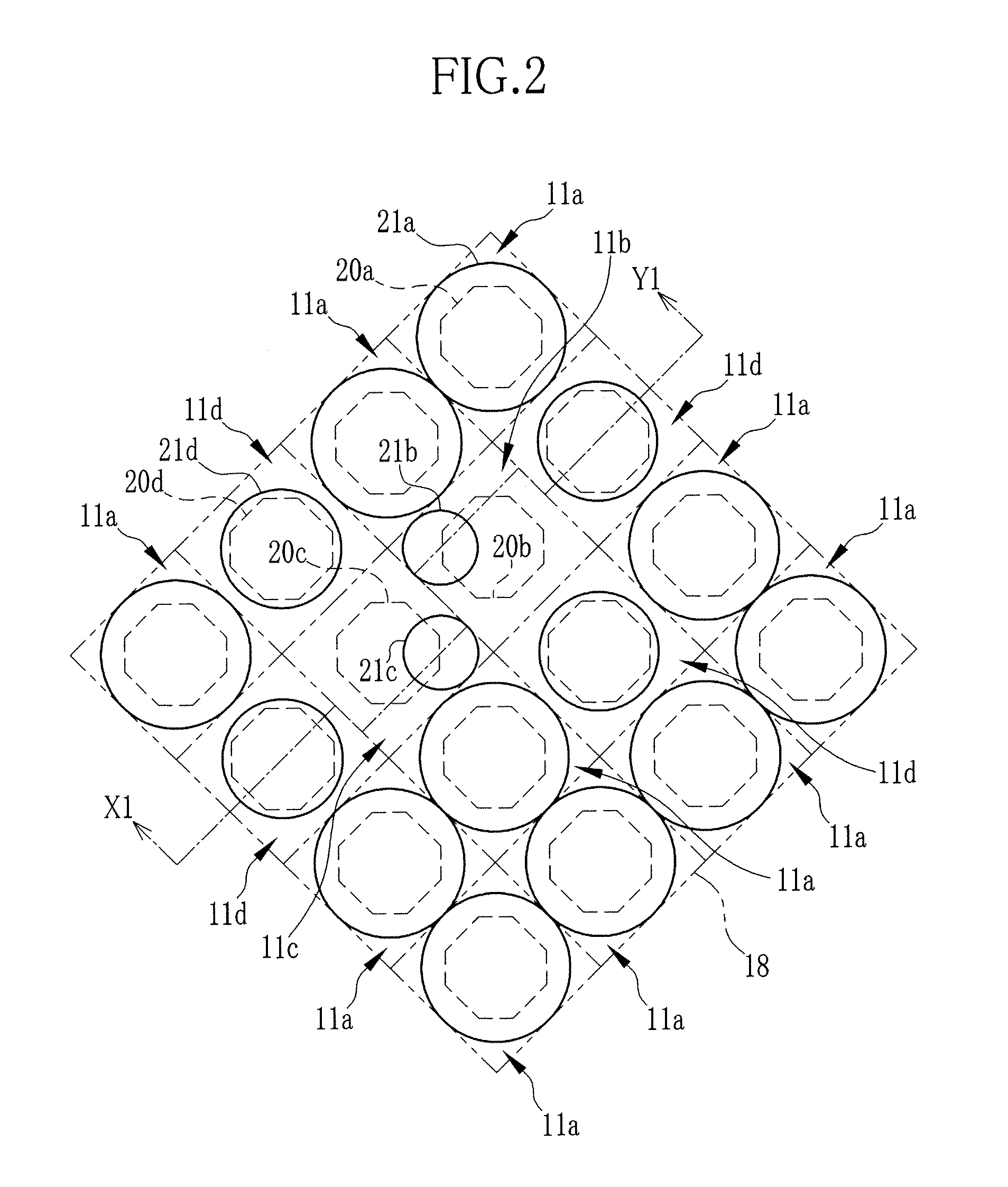Solid-state imaging device
a solid-state imaging and imaging pixel technology, applied in the field of solid-state imaging devices, can solve the problems of wasting a lot of light, wasting a lot of af processing time,
- Summary
- Abstract
- Description
- Claims
- Application Information
AI Technical Summary
Benefits of technology
Problems solved by technology
Method used
Image
Examples
first embodiment
[0053]In FIG. 1, a CCD image sensor (solid-state imaging device) 10 includes a plurality of pixels 11, a plurality of vertical transfer paths (VCCD)12, a horizontal transfer path (HCCD) 13, and a floating diffusion amplifier (FDA) 14. The pixels 11 are arranged with a predetermined pitch in a vertical direction and a horizontal direction and accumulate electric charge depending on incident light. The VCCD 12 transfers the electric charge that each pixel 11 accumulated to the vertical direction. The HCCD 13 is connected to the end of each VCCD 12, and transfers the electric charge transferred from each VCCD 12 in the horizontal direction. The FDA 14 converts the electric charge transferred from the HCCD 13 into a voltage signal (an imaging signal) and outputs it. Between the adjacent pixels 11, there is a device isolation area 15 which electrically separates each pixel 11 so that the electric charge does not transferred.
[0054]The pixels 11 have an arrangement in which that a tetragon...
second embodiment
[0078]Next, a second embodiment of the present invention will be explained. Note that it refers same reference numbers about the same components in functions and constitutions as the first embodiment described above, and omits detailed explanation of them. In the first embodiment described above, the pixel group 18 is composed of the four kinds of pixels which are the first pixel 11a to the fourth pixel 11d. In contrast, in this embodiment, as illustrated in FIG. 4, a pixel group 50 is composed of five kinds of pixels including a fifth pixel 11e in addition to the first pixel 11a to the fourth pixel 11d. The pixel group 50 is a replacement of the seven first pixels 11a adjacent to the fourth pixel 11d, among the ten first pixels 11a included in the pixel group 18 of the first embodiment, by the fifth pixels 11e.
[0079]The fifth pixel 11e is used for imaging forming at the time of execution of image capturing, with the first pixel 11a and the fourth pixel 11d. The fifth pixel 11e inc...
third embodiment
[0084]Next, a third embodiment of the present invention will be explained. In FIG. 5, like the pixel group 50 of the second embodiment described above, a pixel group 52 of this embodiment is comprised of the five kinds of pixels which are the first pixel 11a to the fifth pixel 11e. Of these, the first pixel 11a, the fourth pixel 11d, and the fifth pixel 11e which are the dedicated imaging pixel have the same constructions with those of the second embodiment.
[0085]On the other hand, the second pixel 11b has a microlens 53 having a diameter larger than the microlens 21b of the first and second embodiments. The microlens 53 is formed so that a part of it gets into a vacant space of the adjacent third pixel 11c and a vacant space of the adjacent fifth pixel 11e. Note that the vacant space is the space where the microlens is not formed on the lens forming surface 34a of the pixel.
[0086]Similarly, the third pixel 11c has a microlens 54 having a diameter larger than that of the microlens 2...
PUM
 Login to View More
Login to View More Abstract
Description
Claims
Application Information
 Login to View More
Login to View More - R&D
- Intellectual Property
- Life Sciences
- Materials
- Tech Scout
- Unparalleled Data Quality
- Higher Quality Content
- 60% Fewer Hallucinations
Browse by: Latest US Patents, China's latest patents, Technical Efficacy Thesaurus, Application Domain, Technology Topic, Popular Technical Reports.
© 2025 PatSnap. All rights reserved.Legal|Privacy policy|Modern Slavery Act Transparency Statement|Sitemap|About US| Contact US: help@patsnap.com



